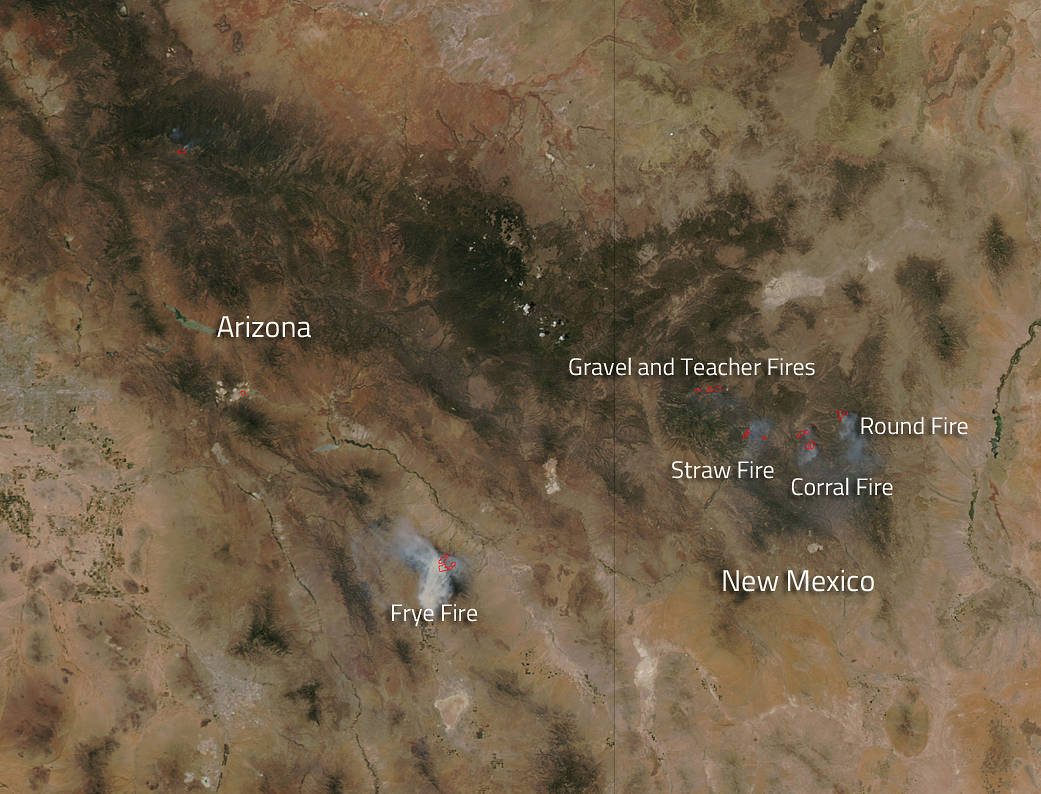Summertime in the West is proving difficult for firefighters as lightning strikes continue to occur and cause new incidents, sorely straining the numbers of firefighters tending to any one fire. The fires shown here, however, are incidents which have already been reported and are growing in size. A previous image feature on these fires can be found here.
A lightning strike ignited the Frye Fire in Arizona on June 7, 2017 in the old burn scar of the 2004 Nuttall Complex Fire. On June 16 that fire was listed on Inciweb as being 961 acres in size. On June 19 Inciweb is reporting that the fire is 9,100 acres, nearly 10 times the size it was just three short days ago. Firefighters are monitoring fire behavior and growth and will take appropriate action if fire threatens any values.
In New Mexico within the Gila National Forest several fires are burning. Summer storms with dry lightning are big contributors to forest fires. The strikes hit the ground and undergrowth is dry and thick. This ignites almost immediately and a wildfire ensues. In the Gila National Forest these fires are currently burning: The Gravel Fire is currently 2,320 acres. The Teacher Fire has grown to 3,555 acres. The Straw Fire is currently at 2,500 acres. The Corral Fire is currently 5,550 acres in size. The Round Fire wildfire is listed as 4,304 acres but this is slated to be re-measured and may be larger. The weather outlook does not favor suppression of the fires as conditions call for continued hot and dry weather through Saturday, cool front passage on Sunday, with dry thunderstorms Sunday and Monday. Possible dry lightning, and strong outflow winds which could contribute to new fires.
NASA’s Aqua satellite collected this natural-color image with the Moderate Resolution Imaging Spectroradiometer, MODIS, instrument on June 17, 2017. Actively burning areas, detected by MODIS’s thermal bands, are outlined in red. NASA image courtesy Jeff Schmaltz LANCE/EOSDIS MODIS Rapid Response Team, GSFC. Caption by Lynn Jenner with information from Inciweb.



























